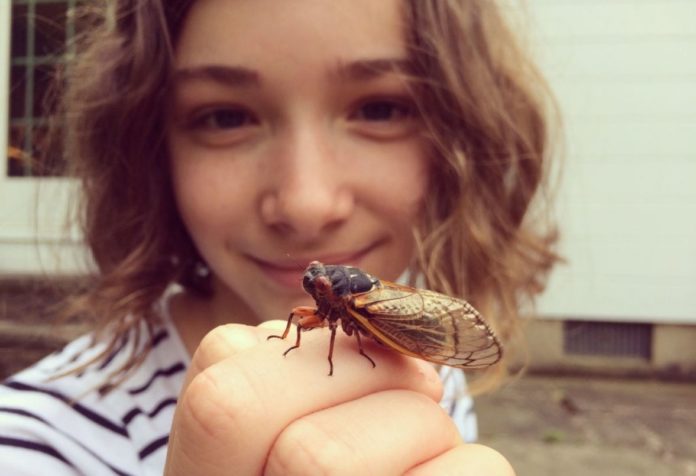The US is getting ready for an invasion of Brood X (great cicada hatching of 2021) also known as the Great Eastern Brood, that will emerge from the soil to spend their final few days of life in the Sunshine.
After spending 17 years living underground, the insects will appear only for two weeks in the northeast US, including New York and Washington, as well as parts of midwest America.
These insects are also called Periodical cicadas as they emerge every 13 or 17 years – something which is unique to the US.
- Neuroscience Breakthrough: Study Pinpoints Brain Activity That Helps Prevent Us From Getting Lost
- Brief Anger Hampers Blood Vessel Function Leading to Increased Risk of Heart Disease and Stroke – New Study
- New Blood Test Pinpoints Future Stroke Risk – Study Identifies Inflammatory Molecules as Key Biomarker
- Enceladus: A Potential Haven for Extraterrestrial Life in its Hidden Ocean Depths
- New Experiment: Dark Matter Is Not As ‘DARK’ As All We Think
However, scientists call it is a natural phenomenon as the insects count the seasons and match the growing patterns of crops and flowers.
Once plants have completed 17 cycles, the insects emerge from their burrows when the soil temperature hits the right spot, around 65F (18C) – a temperature which is close to happening.
Experts expect them to appear from mid-May to the start of June.
They are then visible to the public for two weeks to a month, before they naturally die out.
However, before they die, they ravage crops and local produce as they feed like the plague.
Brood X will emerge in the states of Delaware, Georgia, Illinois, Indiana, Kentucky, Maryland, Michigan, North Carolina, New Jersey, New York, Ohio, Pennsylvania, Tennessee, Virginia and West Virginia as well as Washington DC.
Michigan State University entomologist Gary Parsons said in an MSU question and answer session:
With millions of adult cicadas emerging at once, predators tend to have a feast on them.
Sometimes dogs or pets will gorge on so many of them it will make them sick, but they are not toxic or otherwise harmful.
Periodical cicadas have been doing their 13 or 17-year cycles for probably millions of years. It is thought that by having the long-life cycles, cicadas have prevented predators from specifically targeting them for food.
Then by emerging in the millions all at once, they are too numerous for any predators that do eat them from ever wiping them out.
- Neuroscience Breakthrough: Study Pinpoints Brain Activity That Helps Prevent Us From Getting Lost
- Brief Anger Hampers Blood Vessel Function Leading to Increased Risk of Heart Disease and Stroke – New Study
- New Blood Test Pinpoints Future Stroke Risk – Study Identifies Inflammatory Molecules as Key Biomarker
- Enceladus: A Potential Haven for Extraterrestrial Life in its Hidden Ocean Depths
- New Experiment: Dark Matter Is Not As ‘DARK’ As All We Think
There are so many of them that lots of them will always survive. In the long ago past, it is likely the different broods were more widespread geographically.
It is likely that urbanisation, widespread commercial farming and other factors have reduced and limited them over the years.
Image Credit: Getty
